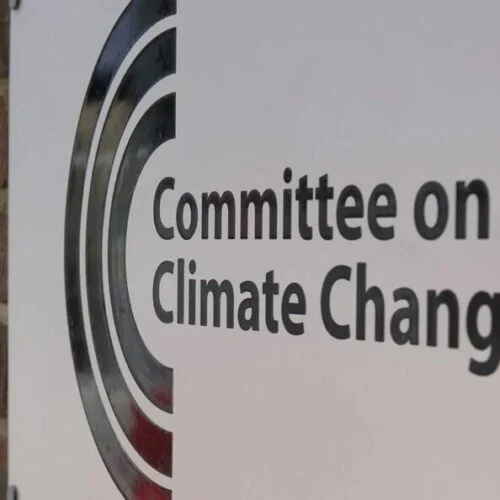Although the UK is on track to have 300,000 public chargepoints installed by 2030, too few have so far been installed outside London and the South East.
This was one of the points raised in the Public Accounts Committee’s (PAC’s) report on public chargepoints for EVs, published today. According to the PAC, a select committee of the British House of Commons responsible for overseeing government expenditures and ensuring they are effective and honest, 43% of installed public chargers are in London and the South East of England.
Public chargepoints are installed and maintained by chargepoint operators (CPOs), private businesses that need enough EV drivers to use their chargers for installation to be profitable. However, for drivers to switch to EVs, they need to be confident that there is sufficient charging provision; chargepoints need to be installed in advance of need.
Without government intervention, this is unlikely to happen at the pace and in the areas needed. In 2022, the Department for Transport (DfT) published Taking charge: the electric vehicle infrastructure strategy, setting its intention to remove lack of EV charging infrastructure as a barrier to uptake, estimating that to do so a minimum of 300,000 public chargers must be installed by 2030.
The PAC said that, although as of the beginning of this year around 73,000 chargepoints were installed in the UK, rural areas are poorly served.
DfT’s £450 million Local Electric Vehicle Infrastructure (LEVI) programme supports local authorities in England to install chargepoints where they identify they are most needed. The programme has seen some success, but PAC said it faces risks as it enters delivery.
In response, DfT said it had expected local authorities to move at a quick pace, but that more time than expected was needed to build local authority capacity and respond to issues that emerged. This has led to delays: as of October 2024 only 10 out of 78 projects had been approved for delivery against a March 2025 deadline.
These delays pose a risk to delivery because with more local authorities procuring at a similar time, the market may not have capacity to serve them all and some procurements will fail.
Head of transport and innovation at the Renewable Energy Association (REA), Matthew Adams, said: “It is clear now more than ever that local authorities need continued support to ensure they have the capability required to rollout a whole range of charging infrastructure.
“We must now help local authorities where charging infrastructure is not commercially viable and remove blockers where it is.”
Motorway charging
DfT had set an ambition to have every motorway service area host at least six ultra-rapid chargers by 2023, however PAC’s report shows that at the start of 2025 only 80 of the 114 motorway service areas met this requirement.
However, the number of ultra–rapid charge points within one mile of the wider strategic road network has grown more quickly than expected, with 2,377 of these installed in July 2024, against a target of 2,500 by 2030.
In response to the report, DfT said there was not a ‘very scientific’ underpinning for having six ultra-rapid chargepoints as a benchmark and indeed meeting demand in the longer term might require much more than this.
Part of the reason the benchmark has not been met is that, as of July 2024, only about 10% of motorway service areas in England had the power capacity needed to meet demand projected to at least 2035. In 2020, DfT launched the rapid charging fund (RCF) with the intention of futureproofing electricity capacity on the strategic road network in the longer term by part–funding the capital costs of upgraded grid connections.
However, five years on the department has yet to issue any of the £950 million funding allotted.
DfT said when the RCF programme was first conceived, “the world was very different” and that much more appetite for private investment has since emerged. How electricity upgrades are funded has also changed.
User experience
The PAC highlighted that drivers with disabilities have been left behind in the rollout of public charge points. Although DfT co–sponsored the creation of a standard for charge point accessibility, it has not mandated its use. Two years since the standard was created, no UK chargepoints are fully compliant.
Chargepoint operators and local authorities have said they need a better understanding of how to apply the standard.
PAC also raised the fact that, although it is too early to say if the user experience regulations introduced by DfT last year are working, the department must monitor them and identify emerging issues. This will include addressing the cost difference between public and private charging; the PAC report calls on DfT to set out of the issue of VAT on public chargepoints will be considered by HMT and the department.
DfT said it expects most people to charge their EVs at home, but acknowledged those reliant on public charging, such as those without access to off-street parking, pay “significantly more” to charge their vehicles.
Analysis has shown that EV drivers without home charging would save an average £145 a year if this ‘pavement tax’ were removed.
The department stated that it does monitor the prices charged by different networks and has made efforts to widen access to home charging rates for those that park on–street through issuing guidance around using gullies and other means to safely house cables across pavements.
REA’s Adams commented: “To ensure infrastructure rollout continues at the same pace or greater we must also welcome all forms of charging infrastructure, including cross pavement solutions which could help terraced households up and down the country access cheap, reliable charging from their home.”
DfT called the cost disparity “probably the single biggest challenge to the electric vehicle transition in the UK”.
The PAC concluded that the DfT must now now determine what actions are needed for the next phase of the rollout in ensuring that the public charging network can meet the needs of all drivers, and “not just enthusiastic early adopters of electric vehicles”.
Founder of Faircharge, a group lobbying the government to reduce the VAT on public charging to bring cost inline with private charging, Quentin Wilson commented: “The PAC report confirms what every EV driver knows. We need more chargers, faster roll out, cheaper electricity costs and cutting the VAT on public charging.
“The government needs to work with industry and drivers to build what has become a critical national infrastructure imperative. Chargepoint operators have done well to deliver 75,000 chargers so far, but they need more help, support and determination from Westminster.”






